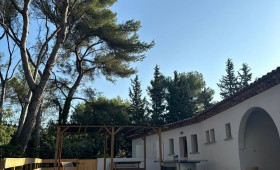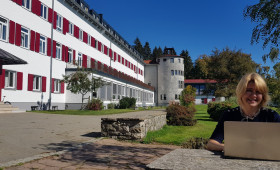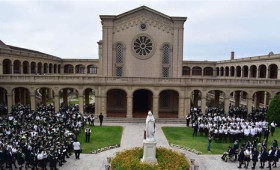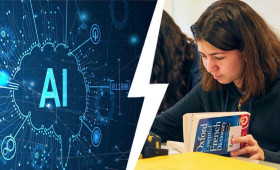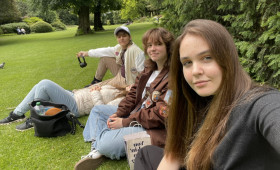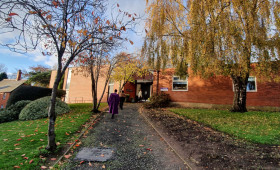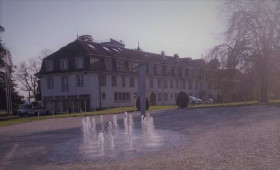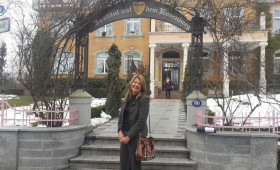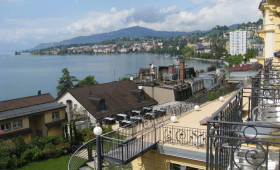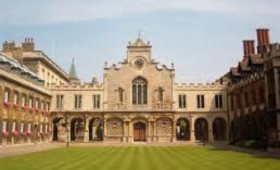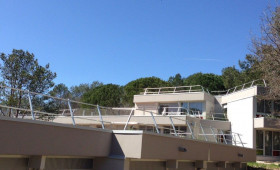Why you need a Gap Year after high school
03.10.175974
Gap Year - break between school and University
At the time when most of students are preparing for transition from high school to colleges and universities some of them decide to take time out and dedicate a year to travel, work, volunteer activities, careful planning of the future and the most important decisions they can make at such a young age.
Unlike many countries of Europe and the world, where the “gap year” — a year between high school and unversity – is common, in Canada it is rare.
For example, in Norway, Turkey, Denmark, according to the Nordic Institute for Studies in Innovation, Research and Education, more than half of students make the annual break from school before starting higher education. At the same time, only 30 % of Canadian students make a break for 4 or more months and majority of them do that for financial reasons.
However, according to the American Gap Association, a year of academic leave in most cases leads to better estimates, improved productivity, job satisfaction and even higher wages.
Many Canadians believe that this gap will only delay the student's entrance into adulthood and the working environment. But at the same time 38% of first-year students leave their studies at the University or moving to another profession. This is a very good example of how the break in studies for one year would have helped yesterday's high school graduates to understand better their interests and save their parents one year of tuition at University of hasty choice.
"One of the problems is a popular opinion that we all as individuals mature with age," says Lauren Frieze, founder of TalentEgg - online resource for students and recent graduates. "The idea is that when you graduate from high school at the age of 17 or 18, you are automatically ready to enter the University or College and it is completely wrong."
As a person that help young Canadians find their career, Lauren Frieze believes that the Gap Year can really help students show themselves to future employers.
"The biggest problem for students when applying for work is that they all look like clones; you cannot distinguish the two students with the same grades in the diploma in business or sociology. But if job seekers have worked somewhere as a volunteer, traveled the world or something else, that is what distinguishes them from other candidates."
Frieze says that those who did very little during the "gap year" don´t show themselves in a good light as the employer is waiting to see the results of personal growth this year.
According to Frieze, in the UK where she received a master's degree in economic history there are a lot of different sites, agencies, and other organizations that are ready to provide support to students who decided to take a year off, which is not in Canada. She hoped that this idea will find support with Canadian parents and in Canada will create special resources to help students in the organization of their "gap year".
At the time when program Mygapyear and others like it provide resources for Canadian students who have decided to take a "gap year" it still remains a few in numbers.
Service Director Mygapyear Madeline Steed said that this kind of organisation was developed in the US where institutions such as Harvard or Princeton allow its students to postpone decisions for a year, and among canadian universities it is a luxury.
Over the past seven years, the organization Mygapyear provided personal training sessions for about 90 Canadian students, but today it remains the only option for young Canadians who want to structure their "gap year".
Just recently another program has been opened aimed to provide Canadian students a more structured 'gap year' to see them return to training more confident and prepared for University life.
Created by Joel Nicholson — co-founder YOUniversityHub.com Academy the Global Leadership Academy is built on four pillars: access, design, build and develop. During the eight-month program, students are required to solve a problem in their community, organize an event, work as volunteers abroad to overcome physical challenges and create something out of nothing.
"We want students to set high goals, because then it will be a more complex and interesting challenge for them and for us," said Nicholson, adding that the program also puts emphasis on life skills training. "Creativity, problem solving skills, structured communication — all courses in the curriculum that given are in management consulting. Google, GE and other highly successful organizations teach these skills to their employees, but in today's education they are missing, which is why I try to include them in the Global Leadership Academy "
After four months in the classroom, students will devote four months to the goals they a more complex and interesting challenge themselves, making regular reports to Nicholson and his staff. Nicholson adds that at the time, as the program costs approximately $ 5,000 — not including the cost of the trip for volunteer programs abroad, a program designed in a way to allow students to not be at a loss, paying internships and participating in events to raise funds.
"Gap year can be a good way to answer the vital questions," says Frieze, adding that those students who took a Gap Year are able to spend it the most effectively and their parents are not concerned that this year was wasted.
on materials of JARED LINDZON
Special to The Globe and Mail

